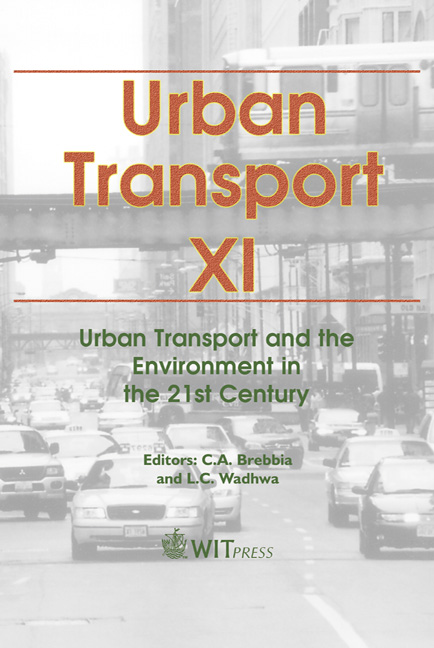Introduction To And Calibration Of A Conceptual LUTI Model Based On Neural Networks
Price
Free (open access)
Transaction
Volume
77
Pages
10
Published
2005
Size
493 kb
Paper DOI
10.2495/UT050571
Copyright
WIT Press
Author(s)
F. Tillema & M. F. A. M. van Maarseveen
Abstract
This paper deals with Land-Use-Transport-Interaction (LUTI) and presents the background and the calibration of a conceptual data driven LUTI modeling tool which is based on neural networks. A literature survey reveals the opinion of experts on the state of the art LUTI models: currently used land use transport models are too aggregate in substance to match travel demand models. Therefore research is conducted into the refinement of the models; resulting in comprehensive models. Unfortunately lack of theoretical frameworks results in these models not being operational on a large scale. This paper looks for an alternative approach and therefore addresses the following questions: (i) what are solution methods to make LUTI models more applicable; (ii) is there a sound way to put into operation these solution methods; (iii) what modeling technique is suitable to be used in this context; (iv) how does the conceptual LUTI then look like; and finally (v) can we calibrate and test this model. This leads to a conceptual model with three building blocks; (i) accessibility; (ii) household location choice; and (iii) employer location choice. Based on the demands and the previously mentioned lack of clear theories, it is concluded that a data driven approach, using Artificial Neural Networks (ANNs), is suitable to fit the framework. The auto calibration of ANN(s) ensures that complex relationships are found without a theoretical framework. The calibration of the ANNs in the model shows good results. Further research has to result in the actual implementation of the model. Keywords: LUTI, transport planning, neural networks, household location, employer location, accessibility.
Keywords
LUTI, transport planning, neural networks, household location, employer location, accessibility.





